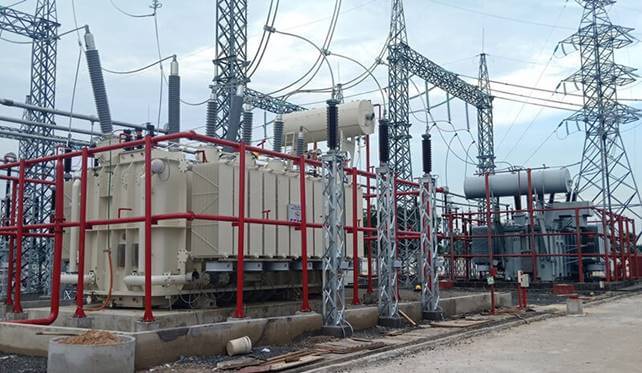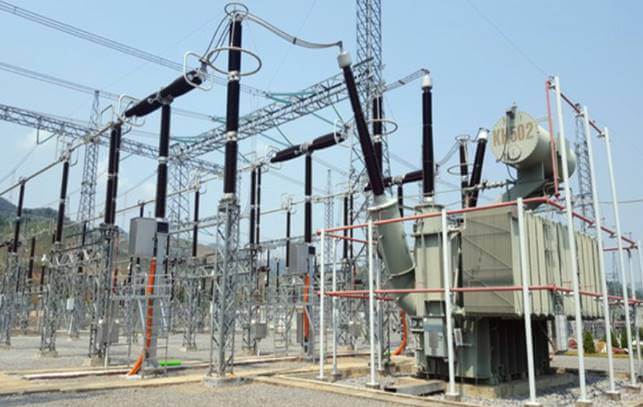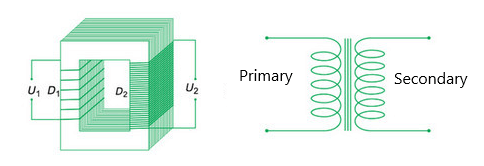In today’s article, we will learn about what are substations. I will present in detail the structure, operating principle, function, and classification of substations.
What are substations
+ Definition
The electricity generated from a power plant will be pushed to a high voltage of several tens to several hundred thousand volts to be able to transmit lines over long distances. This high voltage goes from the factory to the transmission substations, where all the components work to safely reduce the voltage so that it can be distributed locally from here.
The voltage from the distribution substations (several thousand volts) will go to the outdoor transformers to further reduce the voltage (220V, 380V) for home and industrial use. This voltage is distributed to all the various electrical circuits that power your tools and equipment.
Thus, a substation is an intermediate device used in power transmission and distribution systems.

What are substations
+ Function
Electricity before going to the customer will go through three steps: generating or producing electricity, power transmission, and distribution of electricity to individual customers.
A substation is a device that transmits electricity from the place of production to the place of consumption by converting electricity from one voltage level to another.
If you think of the power grid as a giant machine, substations are the link that connects different components together.
+ Structure
There are many different types of substations, each with different structural characteristics. The basic components are Transformer, Busbar System, Isolator, Grounded Lightning Protection System, Operating Area, Distribution Area.

What is the structure of substations?
+ Some protective devices
. Like all electrical equipment, substations sometimes experience unexpected failures after a long period of operation. The substation needs to have some protective devices so as not to lead to serious damage.
* Isolator
To avoid shutting down the entire substation, we need switches that can isolate equipment, transfer loads, and control current along the busbar. Turning high-voltage lines on and off is not as simple as turning on a light switch.
At high voltage, even air can act as a conductor, meaning that when you suddenly disconnect it, current can continue to flow through the air. The phenomenon is called arcing. The arcing not only disables the switch but is extremely dangerous and causes damage to the equipment.

Isolator – what are substations
* Fuse
The most common type of electrical problem in a substation is short circuit to the ground. This type of fault creates a low-resistance path for current to flow to the ground and leads to overloading of lines and electrical equipment.
The simplest way to protect from this type of failure is to use a fuse, a device that will break a circuit at a certain threshold of current. Fuses are simple and do not require much maintenance, but they also have some disadvantages. They are disposable and cannot be used to interrupt currents for other types of faults.
* Circuit Breaker
CB is a circuit breaker device that has a similar role to a fuse, but has a more complex structure to handle many different types of faults. Circuit breakers are carefully designed to cut off large voltages and currents without damage.
+ Classification of substations
* Super high voltage: Substation with voltage greater than 500kV.
* High voltage: The substation has voltage of 66kV, 110kV, 220kV and 500kV.
* Medium voltage: Including substations with voltages of 6kV, 10kV, 15kV, 22kV and 35kV.
* Low voltage: These are substations with lower voltage, usually 0.4kV and 0.2kV.
Working principle of substation
At large power plants, electricity is produced at a slightly low voltage of about 10-30 kV. After that, One will use a transformer to push this voltage to a higher voltage level. The purpose of this is so that the voltage can travel long distances along the transmission line.
In power transmission, using a higher voltage reduces line losses, making the transmission more efficient but also much more dangerous. Therefore, overhead power lines are placed at a very high position to keep away from trees and human activities.
As transmission lines reach densely populated areas, keeping them that high is not feasible. Therefore, before distribution, the voltage of the grid needs to be lowered again by a transformer.
A transformer is an simple device that operates on electromagnetic induction. It consists of two coils, the primary coil and the secondary coil placed close together. When we apply a voltage to the primary coil, it creates a magnetic field and the secondary winding will generate an induced voltage.

Working principle of transformer – what are substations
The induced voltage will be proportional to the turn ratio of the transformer. For example, if the transmission side of the transformer has 1000 turns and while the distribution side has 100 turns, the voltage on the distribution side will be ten times less. This simple operating principle of the transformer makes it possible to increase or decrease the voltage as needed to balance safety and efficiency along each part of the grid.
Requirements when designing substations
+ Ensuring power quality: Determine the load center and position the station so that the substation is located in the load center to save wires, and limit voltage drop and power loss of the power network.
+ Investment costs are not wasted
+ Safety for people and equipment: Be close to the power grid and ensure the line’s electrical safety corridor. Besides, in order to safe for local people where the substation is located, the location of the construction substation does not affect the factory and other works.
+ The structure is convenient for operation and maintenance and repair.
>>> Related post
What is electricity energy? How to generate electric energy
How does grounding electricity work
Star Delta Starter control circuit (4 circuits)
Reference material: How do substations work